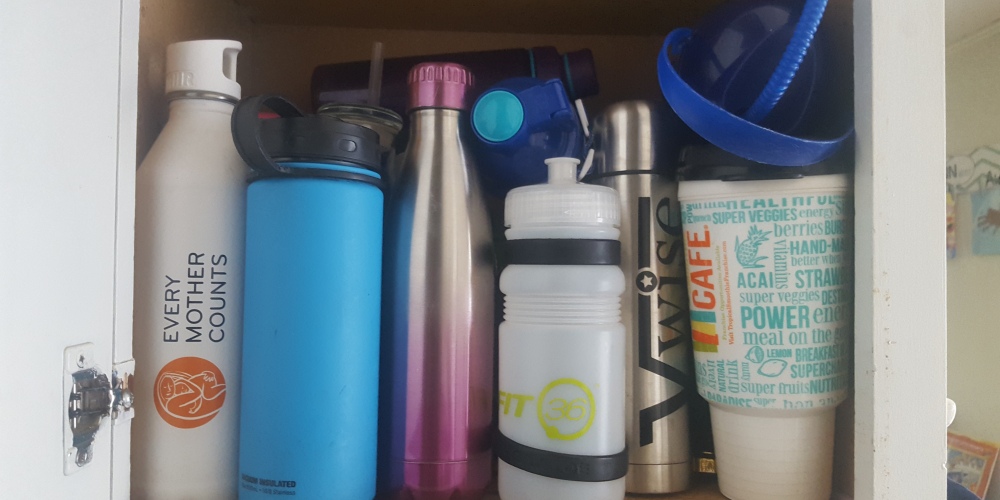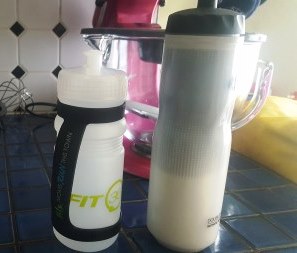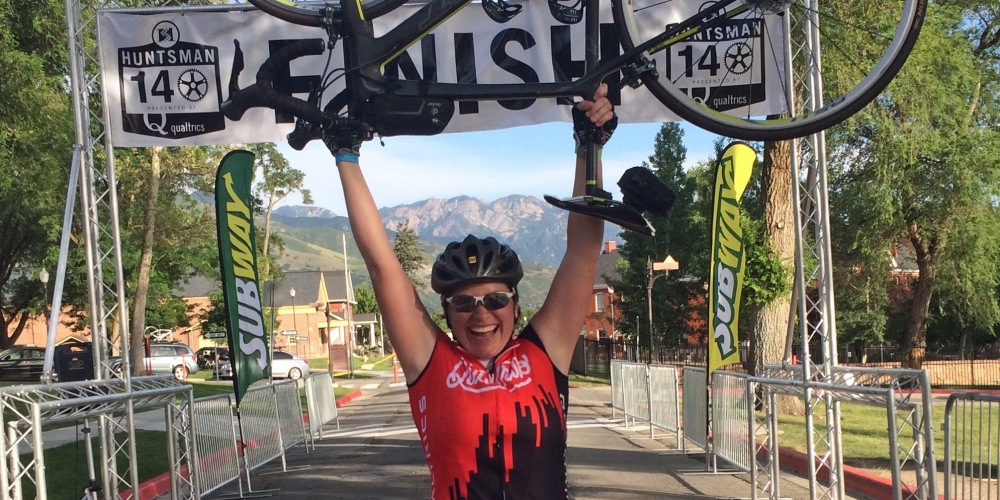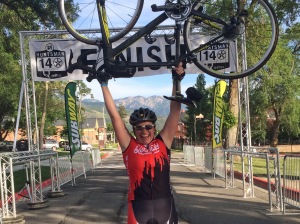My first endurance cycling event, and I’m almost ashamed to admit it because it wasn’t Race Across America, The Triple Bypass or some other legendary cycling feat, was RAGBRAI. Yep. The annual bike ride across Iowa. Pretty sure I just killed any sex appeal or athlete envy you might have had for me. So, moving on…At the time, I was new to the bike and the thought of riding 500 miles in one week was daunting. I trained by riding alongside Ryan, trusting that by doing exactly as he did I would prevail. After all, he’s an Iowa boy, forged in the RAGBRAI tradition since birth.When July rolled around, I was ready: My bike was dialed in, I had a thousand miles in the saddle and was well rested. My first day was glorious. My legs and lungs dutifully carried me through 70 miles of corn-speckled hills. When we rolled into camp, I felt like a champ, ready for the next six days. By week’s end, I was a blistered and bitter trainwreck. In spite of my training and Ryan’s ever-present encouragement, I was OVER with RAGBRAI and everything having to do with Iowa. God save the poor bastards who escorted me home that year.Ten years and ten RAGBRAI later, I understand what went wrong–terribly wrong–during my virgin endurance event. To this day, I share this nugget of hard-won wisdom with my clients and ride buddies who endeavor to ride an endurance event: It matters little how well you’ve trained if you can’t enjoy the experience because of (understandably) rookie errors.
Before I even consider prescribing a training plan I climb high on my soap box for the How to Prepare for an Endurance Cycling Event That has Nothing to do with Riding a Bike lecture.
And so it begins… *(Don’t fret, next edition I will give you the never-fail, top-secret, chick-rider-only training program)
5: Spend an Extra “Ben Franklin” for a Professional Bike Fit.
Let me be abundantly clear on this one, gals: The 43 second slap shot job performed by the 18-year-old who sold you your bike does NOT qualify as professional. Nor does having Neighbor-Who-Rides-All-The-Time bestow his well-intentioned and erroneous opinion regarding your bike and body. Why am I so adamant about this? Because riding an ill-fitting bike is inefficient, uncomfortable, and dangerous. Not only do you risk irreparable damage to joints and soft tissue, but you’ll likely stop training due to pain or disdain. By training for an endurance event, you are agreeing to spend more time with this machine than your husband. A professional fit is not optional.
4: Plan the Ride, Ride the Plan.
I promise you I’m not stating the obvious here. This isn’t a pep talk about riding adequate miles. Plan the Ride, Ride the Plan is being honest about your intentions during the ride. If you intend to get up early and ride before dawn, do that during training. If you plan on eating gels and bars and sports drinks, do that during training. If you plan on sleeping in, riding on coffee and candy bars until the first bar graces the horizon, do a variation on that during training. This might seem like a strange bit of advice coming from a wellness professional. However, I’ve seen too many people train like a saint and ride like a she-devil and wonder why they feel like road kill. If you join a ride to perform, train for performance. If you join to party, I hereby give you permission to train for that, too. Either way, you’ll likely be more prepared and safer than if you plan for one and do the other.
3: Use Protection.
Imagine this: Day five of RAGBRAI; A haggard blonde combing the aisles of the drugstore filling her basket with balms, salves, blister guards, creams, and bandages. She is desperate to create a barrier between the gaping sores on herself and the bike seat, (which might as well be made of sand paper). After testing various combinations, she manages to eek through the final 150 miles of rub-rub-rubbing on her weary privates. The moral to my true and tragic story? Protect yourself.
If your event is multiple days of riding, practice riding multiple days in the chamois you intend to wear and on the bike seat you intend to rock. Do not ride a new chamois or a new seat. That, my friends, is torture. Furthermore, do not, under any circumstances ride a chamois two days in a row without washing it. Just imagine all the bacteria growing down there… all day.
It’s a vulnerable area—Protect it.
2: On the Bike is Secondary.
What could be more important than what you do on the bike in an endurance cycling event? What you do off the bike! In fact, ask any experienced rider to share an off the bike saga and prepare to settle in for a long tale.
What you eat, when you eat it, how much you eat, where you sleep, when you sleep, how you sleep in a high school gym with 200 other farting, snoring, restless riders while it’s raining to beat hell, where you pee, where you poop, where you poop right frickin’ now because that burrito just hit you like a freight train, what to do when you start your period, how much stuff to carry, what to wear, what not to wear… As you can see, off the bike is exceedingly more unpredictable than on the bike. Hence, the goal going into any event: Be consciously aware that off that bike events are bound to happen, they will affect your best-laid, on-the-bike training plans, probably require more effort to rectify, and when taken in stride are a glorious, maddening, harrowing, and exhilarating part of the on the bike experience.
When off the bike throws you a curveball, tap a veteran cyclist for support, be creative, and practice letting go. When off the bike is finally resolved, get back to the rhythmic predictability of on the bike.
1: Take Care of Your Body.
This is your trainer speaking. On the surface, my profession is dedicated to helping clients train for various events. Our real job is stewarding bodies. We are that little voice that reminds you to take care, for without her any event would be impossible. You may hate her. You may look at her in the mirror and lash out. Starve her, stuff her, work her, neglect her, cover her up, cut her, mock her, pinch, prod, and curse her. All that, and at the end of the ride, she–this villain–will loyally pedal you through life.
You might not like her, but if you train her and take care of her, she will adapt and grow stronger. Feed her good food; Nutritious stuff that will help her rebuild after a tough training ride. Take her for a massage or a visit to the chiro or the spa; Let some healing hands have their way with her, especially the sore parts. Smear her up with sunblock, wear a helmet, stay off of busy roads, and make sure she doesn’t get smashed or ripped open or burned or hurt. And, when you’ve had a particularly good day in the saddle, maybe riding further than ever, or effortlessly passing some punk, or climbing a hill you never thought you could, or just feeling frickin’ awesome, give her a little pat on the arm and a “Good job, honey, we did it.”
It’s a simple deal: You take care and she (that little voice in your head) will shepherd you through the ride. And, maybe somewhere along the way, you might come to an agreement.
– Morgan

 thing that fits inside your water bottle cage on your bike. Unfortunately, water bottles and water bottle cages are not universal, so you will need to find one that fits yours. But don’t feel like the more expensive the better. Honestly the water bottles you get in race goody bags generally work great for this. You may want to up the ante and get an insulated water bottle if you live in a hot climate or like your drink ice cold like I do. Look for an easy open spout that you can open with your mouth.
thing that fits inside your water bottle cage on your bike. Unfortunately, water bottles and water bottle cages are not universal, so you will need to find one that fits yours. But don’t feel like the more expensive the better. Honestly the water bottles you get in race goody bags generally work great for this. You may want to up the ante and get an insulated water bottle if you live in a hot climate or like your drink ice cold like I do. Look for an easy open spout that you can open with your mouth.





 This one is huge for me. Every spring I sign up for 5-10 cycling events and it keeps me accountable to training and ramping up to be ready for my summer schedule. Could I plan a full cycling calendar on my own? Sure. But the reality is
This one is huge for me. Every spring I sign up for 5-10 cycling events and it keeps me accountable to training and ramping up to be ready for my summer schedule. Could I plan a full cycling calendar on my own? Sure. But the reality is 

